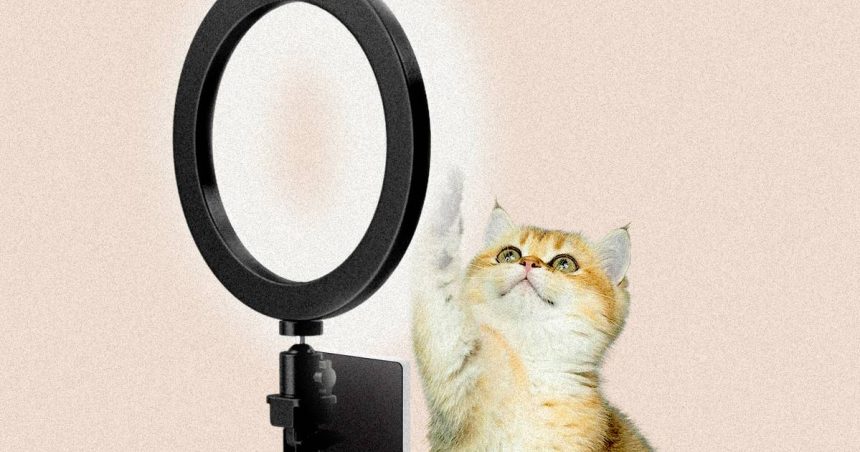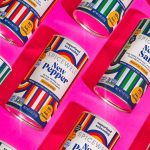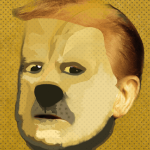Animals are no strangers to advertising. Budweiser has its Clydesdales, Aflac has its duck, and Geico has its gecko, who is very online.
Of course, the little lizard isn’t the only animal with a social presence. Pets have been popular on Instagram since its early days, Mae Karwowski, who founded influencer agency Obvious.ly a decade ago, told us.
About five years ago, the petfluencer trend started “coming of age,” according to Aaron Hall, group director of naming at brand experience firm Siegel+Gale, whose Labradoodle, Pilot, has done some modeling work. Then Covid hit, and a wave of people stuck at home decided to get pets—younger people in particular.
“They are more likely to be putting their pets on TikTok or Reels, so there’s just this plethora of pets who could be tapped,” Hall told Marketing Brew. “Also, if you’re trying to reach a demographic, let’s say Gen Z or young millennials, they’re obviously into pets.”
The global pet industry is expected to reach $500 billion by 2030, per Bloomberg Intelligence, up from $320 billion today. As furry—or scaly, or feathered—friends enjoy social media stardom, a cottage industry within marketing has grown to facilitate their brand deals: petfluencer agencies.
Growing pawsibilities
In 2019, after several years working at ad agencies in Singapore, Jane Peh co-founded The Woof Agency to connect brands with “pet creators.” In the early days of the agency—which has since rebranded to self-serve platform Pawjourr, although The Woof Agency does still exist for clients looking for managed services—there was still a lot of education to be done around petfluencing, especially in the Asia-Pacific region, Peh said.
Last year, Pawjourr opened an office in the US as well as Malaysia to meet growing demand, Peh said. It only took about three months for the company to turn a profit, and revenue is on track to double from last year, according to Peh, although she declined to share specific figures. Pawjourr has worked with brands like Purina, Dyson, and Crayola.
In the UK, Layla Flaherty was a bit ahead of the curve. After founding animal talent and casting agency Urban Paws in 2015, she expanded business to include pet influencers about five or so years ago when she noticed that “a lot of our animal models and actors had a large social media following,” she said.
Though Flaherty said petfluencers are currently more popular in the US, she added that it’s a growing sector that’s “here to stay.” Urban Paws’ influencer roster includes about 500 animals, according to Flaherty, including hedgehogs and birds. The agency’s full client list has included Amazon, Apple, and Rolex, and it’s done influencer campaigns for brands like Hilton and pet insurance company Petsure.
Obvious.ly deals with influencers of all kinds, but animals seem to be holding their own even in the overarching ecosystem; Karwowski said there’s likely over 10,000 petfluencers on the agency’s platform, with about 5% of its revenue coming from brands in the pet industry.
Vet-ting
Working with animal influencers is, in some ways, like working with human influencers. Brands can opt for white-glove agency services or platforms, request animals with specific follower counts, and share briefs with requirements for content, pet agency execs told us. And though pets can’t talk, maintaining an authentic voice is just as important on their accounts.
Clients provide guides with talking points or hashtags for pet accounts to include in posts, Flaherty said, but “it’s always the pet” who writes the content—in other words, their owner.
“Keeping that original voice is key to a campaign, because if their followers see something that is out of the ordinary, it doesn’t sound like their true voice, then the chances of a campaign flopping are higher,” Flaherty said.
To try to make sure that doesn’t happen, Urban Paws has an “in-depth casting process” that includes regular checks on engagement rates and post cadence, according to Flaherty. Petfluencencing, it seems, can be a dog-eat-dog world.
Karwowski said marketers who choose to work with pets should also “pay extra attention” to the vetting process to make sure the accounts they tap are truly aligned with the brand’s messaging, as opposed to being drawn in by an irresistible pup who could simply drive a lot of likes.
“I think there was a time five years ago or so where…it wasn’t any more thought out, and there wasn’t any more foresight to it than that,” Karwowski said. “Now people are like, ‘This is a key part of the overall group of creators we’re going to work with, and this makes a lot of sense for our brand.’”
Power of the paw
In other ways, partnering with a pet is much different than hiring a person, according to Peh. For one, animals can’t pretend to like a product—especially cats, she said.
“With cats, it’s a little bit more tricky because they get really fussy and frustrated if you give them food that they don’t like,” Peh said. “They will poop in your shoes. They get really angry about it. Cat owners will try to avoid incurring the wrath of their cat, and they don’t really change things very often.” This, she said, can lead to “rejections or pushback” on some campaigns.
On the bright side, petfluencers can be more affordable than human influencers. Some with massive follower counts can command about $6,000 per post, according to Flaherty, but generally speaking, they are “probably a little bit cheaper.” Peh said pet owners tend to charge less because many of them post as more of a hobby than a full-time job.
Plus, animals are essentially a sure thing when it comes to brand safety, execs said.
“You don’t have to worry about celebrity scandals,” Hall said. “Your pet is never going to be the next Kanye.”
Get marketing news you’ll actually want to read. Subscribe to Marketing Brew today.
Read the full article here










